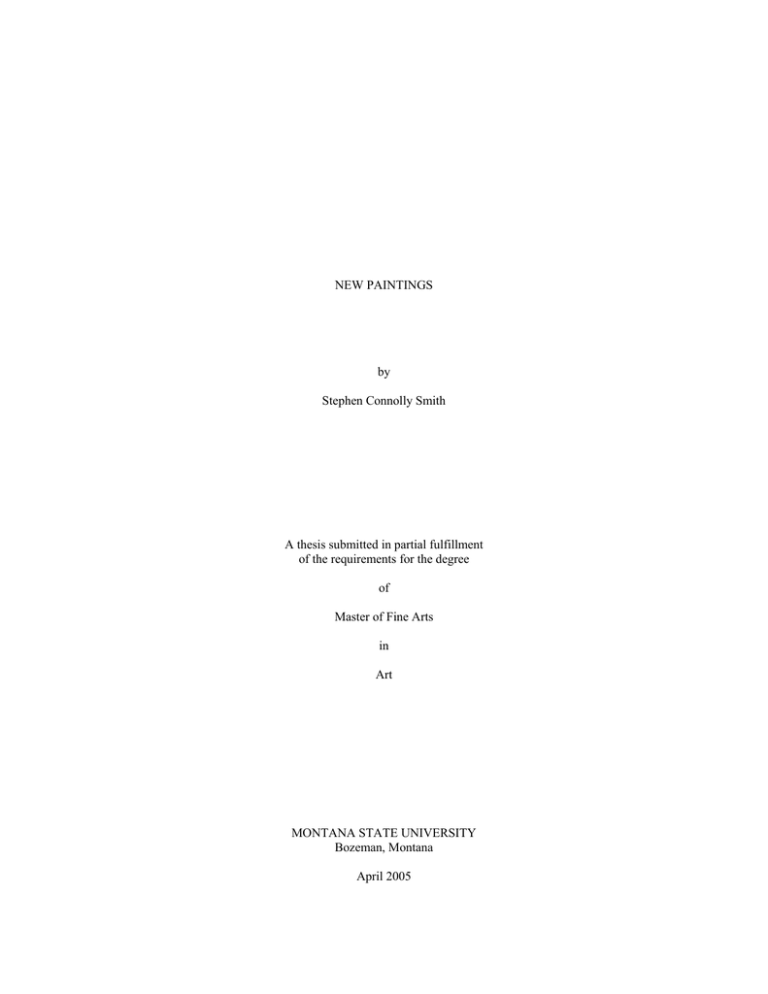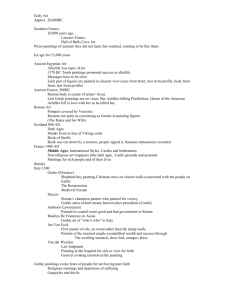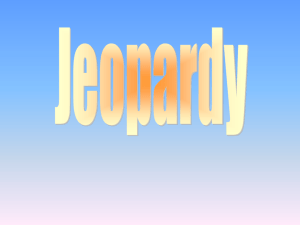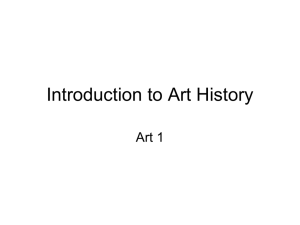
NEW PAINTINGS
by
Stephen Connolly Smith
A thesis submitted in partial fulfillment
of the requirements for the degree
of
Master of Fine Arts
in
Art
MONTANA STATE UNIVERSITY
Bozeman, Montana
April 2005
©COPYRIGHT
by
Stephen Connolly Smith
2005
All Rights Reserved
ii
APPROVAL
of a thesis submitted by
Stephen Connolly Smith
This thesis has been read by each member of the thesis committee and has been found to be satisfactory
regarding content, English usage, format, citations, bibliographic style, and consistency, and is ready for
submission to the College of Graduate Studies.
Chairperson, Graduate Committee
Harold Schlotzhauer
April 14, 2005
Approved for the School of Art
Head, Major Department
Richard Helzer
April 14, 2005
Approved for the College of Graduate Studies
Graduate Dean
Dr. Bruce McLeod
April 14, 2005
iii
STATEMENT OF PERMISSION TO USE
In presenting this thesis in partial fulfillment of the requirements for a master's degree at
Montana State University, I agree that the Library shall make it available to borrowers under rules
of the Library.
If I have indicated my intention to copyright this thesis by including a copyright notice
page, copying is allowable only for scholarly purposes, consistent with "fair use" as prescribed in
the U.S. Copyright Law. Requests for permission for extended quotation from or reproduction of
this thesis in whole or in parts may be granted only by the copyright holder.
Stephen Connolly Smith
April 14, 2005
iv
LIST OF IMAGES
Images
Page
1. Heraclitus, oil on panel…………………..……….............................................4
2. The Judgment of Paris, oil on panel………....………........……………….......5
3. The Artist’s Studio, oil on panel…………………........………………………6
4. The Judgment of Paris II, oil on panel……….......……..……………….....…7
5. An Embarkation, oil on panel………...……....................................................8
6. Post to Wire, oil on panel……………….………………………....................9
7. After Corot: The Bridge at Narni, oil ………………………………….........10
8. Installation view..............................................................................................11
9. Installation view..............................................................................................12
1
In the Lives, Vasari advises the artist to aim his arrows high, and above the mark
which he intends to hit. In that way the aspiring artist compensates for the fact that the
arrow seems always to fall short of the target. Vasari’s advice was given to artists whose
goal it was to represent nature and, particularly, the human body. And since Vasari felt
that no artist would ever come as close to representing the body as perfectly as
Michelangelo, one could do no better than to place the efforts of Michelangelo in their
sights, and aim at surpassing him.
Four hundred fifty years later, Vasari’s advice seems even more difficult to
follow. An artist today has multiple targets at which to aim, some with the goal of
representing nature, and some not. The body of work presented here is a synthesis of
traditional and contemporary goals, the result being a hybrid formed by aiming
simultaneously at different targets.
These works stem from a traditional subject matter for painting, the nude. And,
these paintings incorporate many of the traditional aspects of representing the nude
figure: they are constructed on panels and painted in thin, transparent layers. They utilize
linear and atmospheric perspective in order to achieve the illusion of space. They are
monumental in scale. The colors are derived from a limited palette, and the figures are
grouped in artificial ways. At first glance, they appear to be traditional figure paintings.
Closer inspection reveals anomalies to traditional figure painting. The figures
appear transparent and incorporeal, as though aware they are constructed of paint. The
underpainting is pronounced, and repentances—pentimento—quite apparent. These
2
effects fix the figures somewhere between the physical surface of the picture, and the
illusionary space of the painting.
The interplay of these paintings as they shift between physical, two-dimensional
object and illusionistic window is carried through to the frames. The traditional function
of the frame—to organize the space of the painting, to eliminate outside distraction, to
focus the attention of the viewer—is hybridized to serve multiple functions. Spaces in
the frame that are real, that are actual, echo spaces in the painting that are illusionistic.
This activity unites the painting with its frame. The real transparency of the space in the
frame is allowed to contrast the painted transparency of the painted surface, calling into
question the differences of each, and allowing frame to be as painterly, as gestural, as
illusionistic as the painted surface.
Broken cornices in the frames are quotes from Baroque architecture, and were
incorporated to serve a similar function, that of softening the edges, rounding the forms,
and, most importantly, of admitting dynamic shafts of light. Such devices, while being
concrete and physical, simultaneously evoke change, transition, and movement. The
frames undulate in response to the figures; the figures react to changes in the frame.
The landscape in which the figures appear are modern places. The traditional,
rosy palette that generally lends splendor to bucolic, outdoor settings is intact; however
the subject is modern. Airports are depicted, as well as places resembling tourist
destinations. Thus, the traditional motif of travel to exotic places—Watteau’s
3
Embarcation to Cythera comes to mind—is conjured. But the passenger plane serves the
function of eliciting modern ideas of both leisure and anxiety. They are incorporated into
these paintings as the dynamic shapes that they are, and as metaphors for both
permanence and flux.
4
Image 1 – Heraclitus
5
Image 2 – The Judgment of Paris
6
Image 3 – The Artist’s Studio
7
Image 4 – The Judgment of Paris II
8
Image 5 – An Embarkation
9
Image 6 – Post to Wire
10
Image 7 – After Corot: The Bridge at Narni
11
Image 8 – Installation View
12
Image 9 – Installation View





